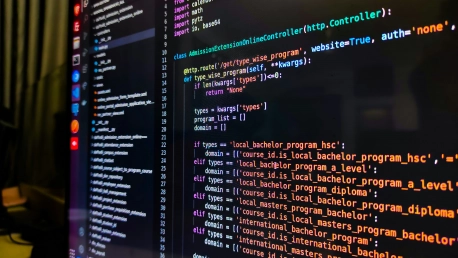In the ever-evolving realm of software development, artificial intelligence (AI) stands as a beacon of innovation, promising to streamline processes and bolster productivity. The impending release of AI platforms like Microsoft’s GitHub Copilot Enterprise encapsulates this potential, equipping developers with sophisticated tools that can predictively complete code snippets. Yet, the integration of such technology does not come without its caveats. Organizations must navigate a minefield of challenges, from security risks to concerns over intellectual property rights and data privacy. Striking a balance between harnessing the power of AI and ensuring compliance with various regulatory standards is critical. It’s a sophisticated dance, one that requires careful choreography to reap the benefits while averting potential missteps.
Assessing the Risk of Copyright Infringement
AI-powered code completion tools present a conundrum for intellectual property laws. These tools, trained on a plethora of code from various sources, may inadvertently output sections of copyrighted material. The legal complexities of utilizing such technology become a pertinent issue for companies keen on avoiding the pitfalls of infringement. Microsoft, aware of these challenges with GitHub Copilot, has instituted measures like the Copilot Copyright Commitment, designed to shield developers from legal backlash associated with generated code. This commitment includes blocking outputs that closely mimic public code, thereby reducing the likelihood of copyright disputes.The burden, however, doesn’t solely rest on the shoulders of AI service providers. Organizations must shoulder a degree of responsibility, too, implementing safeguards and configuring tool settings to prevent the replication of existing code. Through enabling features like duplicate code detection and adhering to provided guardrails, businesses can mitigate the risks. Understanding the intricacies of legal provisions and aligning with them is not just recommended—it’s essential for seamless and lawful AI-assisted development.
Validating the Security of AI-Generated Code
As we dig deeper into the mechanics of AI-assisted coding, the security dimension of the generated code emerges as a flashpoint. AI tools, capable though they may be, echo the vulnerabilities of the datasets on which they were trained. This mimicry can cement existing security gaps within newly forged code—a grave concern that could seed systemic flaws within IT infrastructures. Numerous studies have shone a light on the high incidence of vulnerabilities within projects where AI-assisted tools were employed, painting a sobering picture of the latent risks.To combat this, organizations require stringent validation protocols. The security of AI-generated code must be rigorously tested and reviewed with the same, if not heightened, scrutiny applied to human-generated code. Effective practices such as continuous integration and deployment pipelines must be fortified with robust scanning tools that can detect and address potential faults. Only through such meticulous oversight can the deployment of secure, AI-generated software be convincingly assured.
Protecting Sensitive Data from Accidental Exposure
AI’s appetite for data is insatiable, a trait that, while often beneficial, can be detrimental when it comes to sensitive information. As AI tools consume and learn from vast swaths of code, they run the risk of inadvertently capturing and exposing sensitive data like API keys or access tokens. Incidents where millions of hardcoded secrets were leaked onto public repositories serve as a stark reminder of the potential for AI to proliferate confidential information. This form of data spillage is particularly insidious, for it stems from what is ostensibly a strength of AI: its capacity to learn and replicate.Organizations can inoculate against such risks by cultivating robust data hygiene practices and deliberately opting out of contributing sensitive code to AI training sets. The maintenance of airtight confidentiality protocols, coupled with a selective approach to data sharing, lays the groundwork for a controlled AI learning environment. Establishing clear boundaries in terms of data utilization not only hedges against data leaks but also affirms an organization’s commitment to information security.
Thwarting Adversarial Attacks on AI Systems
The sophistication of AI comes with inherent risks, paving the way for malicious attacks designed to exploit these systems. Attackers subtly manipulate data, much like a thief using a slim jim, to corrupt AI outputs, creating a new realm of security challenges where AI could unwittingly fulfill malign purposes.To safeguard against such threats, a combination of proactive strategies is essential. This includes regular vulnerability scans and strict data access controls to feed AI only with secure data. Additionally, deploying models that preserve data integrity fortifies AI against cyber incursions. These precautions are not excessive; they are vital for maintaining robust AI defenses.In the dawn of AI-augmented coding, the blend of opportunity and potential pitfalls necessitates careful attention to security and regulatory norms. Integrating AI into software development is not just about tapping into its power; it’s about doing so with a strategy that places a premium on caution and due diligence. This careful approach will enable us to leverage AI’s abilities while safeguarding our digital ecosystem.









